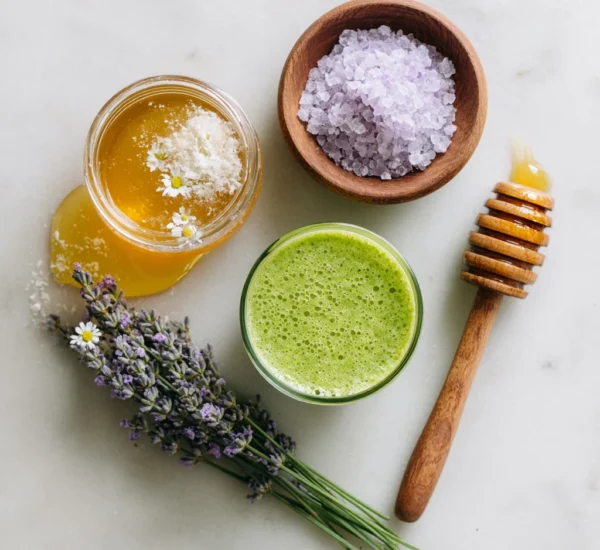Creating a Restful Corner in Your Home: Your Guide to Tranquility
In today’s fast-paced world, finding moments of peace and tranquility within your own home is more important than ever. Creating a restful corner can provide a sanctuary where you can relax, recharge, and escape the daily stresses. This guide will walk you through the essential elements of designing a serene space tailored to your personal needs and preferences.

Defining Your Restful Corner: Purpose and Location
Before diving into decor and furnishings, take time to define the purpose of your restful corner. Are you looking for a space for meditation, reading, crafting, or simply quiet contemplation? Knowing the intended use will help guide your design choices.
Next, consider the location. Ideally, choose a spot that’s naturally quiet and away from high-traffic areas. A sun-drenched nook by a window, a spare bedroom corner, or even a well-defined space in your living room can all be suitable options. Think about minimizing distractions – away from the TV, kitchen noises, or your home office.
Assessing Natural Light and Sound
Natural light plays a crucial role in creating a relaxing atmosphere. Maximize the amount of sunlight entering your space by using sheer curtains or leaving windows uncovered when possible. If natural light is limited, invest in high-quality artificial lighting that mimics daylight. Warm, soft lighting is generally preferred for relaxation.
Sound is another important factor. If noise is an issue, consider using soundproofing materials like thick curtains, rugs, or acoustic panels. You can also introduce white noise through a fan, fountain, or calming music to mask distracting sounds.
Essential Elements for a Tranquil Space
Once you’ve identified the purpose and location of your restful corner, it’s time to choose the essential elements that will contribute to a tranquil atmosphere.
Comfortable Seating and Soft Furnishings
Comfortable seating is paramount. Choose a chair, couch, or floor cushions that encourage relaxation. Consider factors like ergonomics, support, and personal preference. A plush armchair, a cozy loveseat, or even a comfortable meditation cushion can all work well.
Complement your seating with soft furnishings that enhance comfort and visual appeal. Throw blankets, pillows, and rugs can add warmth, texture, and color to your space. Opt for materials like cotton, linen, or wool for a natural and inviting feel.
Calming Colors and Textures
Color psychology plays a significant role in creating a relaxing environment. Soft, muted colors like blues, greens, grays, and pastels are generally considered calming and conducive to relaxation. Avoid bright, stimulating colors like red or orange, which can be overwhelming in a restful space.
Texture adds depth and interest to your design. Incorporate a variety of textures through your furniture, fabrics, and accessories. A soft, woven rug, a knitted throw blanket, and smooth, ceramic vases can all contribute to a sensory-rich and relaxing experience.
Personal Touches and Meaningful Objects
Your restful corner should reflect your personality and interests. Incorporate objects that bring you joy and evoke positive emotions. This could include artwork, photographs, books, or souvenirs from your travels.
Plants are another excellent addition. They not only purify the air but also add a touch of nature and life to your space. Choose low-maintenance plants that thrive in indoor environments, such as succulents, snake plants, or ferns.
Minimizing Distractions and Maximizing Serenity
Creating a truly restful corner requires minimizing distractions and maximizing serenity. This means decluttering your space, reducing technology, and creating a sense of order and calm.
Decluttering and Organizing
Clutter can be a major source of stress and anxiety. Before setting up your restful corner, take time to declutter the area thoroughly. Remove any unnecessary items and organize what remains. Use storage solutions like baskets, shelves, or cabinets to keep things tidy and out of sight.
A minimalist approach is often the most effective way to create a calming atmosphere. Focus on quality over quantity and choose only the items that truly bring you joy and serve a purpose.
Limiting Technology and Digital Devices
In today’s digital age, it’s essential to disconnect from technology to fully relax and recharge. Designate your restful corner as a technology-free zone. Avoid using your phone, laptop, or tablet in this space.
If you enjoy listening to music, consider using a traditional music player or a Bluetooth speaker instead of relying on your phone. Alternatively, embrace the silence and allow yourself to simply be present in the moment.
Creating a Sensory Experience
Engage your senses to create a truly immersive and relaxing experience. Use aromatherapy to fill your space with calming scents like lavender, chamomile, or sandalwood. You can use essential oil diffusers, candles, or incense to achieve this.
Consider incorporating elements of nature into your design. A small water fountain can create a soothing sound, while a bowl of smooth stones can provide a tactile sensory experience.
Maintaining Your Restful Corner: A Daily Ritual
Creating a restful corner is just the first step. To truly reap the benefits, you need to incorporate it into your daily routine and make a conscious effort to maintain its tranquility.
Establishing a Routine
Set aside time each day to spend in your restful corner. Even just 15-30 minutes can make a significant difference in your stress levels and overall well-being. Use this time to meditate, read, journal, or simply relax and do nothing.
Make your restful corner a consistent part of your daily routine. This will help you to associate the space with relaxation and make it easier to unwind and recharge.
Regularly Decluttering and Cleaning
To maintain the tranquility of your restful corner, it’s important to regularly declutter and clean the space. Remove any items that have accumulated over time and dust or vacuum the area to keep it fresh and inviting.
A quick tidy-up each day can help to prevent clutter from building up and ensure that your restful corner remains a welcoming and relaxing space.
Adapting to Your Needs
Your needs and preferences may change over time, so it’s important to adapt your restful corner accordingly. Don’t be afraid to experiment with different colors, textures, and accessories to find what works best for you.
Continuously evaluate your space and make adjustments as needed to ensure that it continues to serve its purpose as a sanctuary for relaxation and rejuvenation.

FAQ: Creating Your Restful Corner
- What is the best color for a relaxing room? Soft blues, greens, grays, and pastels are generally considered the most relaxing colors.
- How can I make my room feel more peaceful? Declutter, use soft lighting, incorporate calming scents, and add elements of nature.
- What should I put in a relaxation room? Comfortable seating, soft furnishings, calming decor, and items that bring you joy.
- How do you make a corner cozy? Add a comfortable chair, a soft blanket, throw pillows, and warm lighting. A small bookshelf can also add to the feeling of coziness.
- How to create a small meditation space at home? Choose a quiet corner, use a comfortable cushion or mat, and minimize distractions. Consider adding a small altar or meditation bell.



